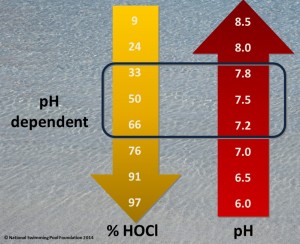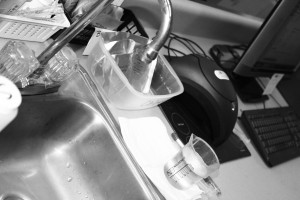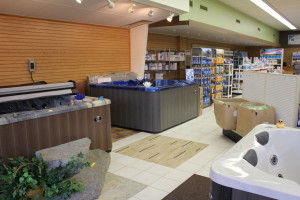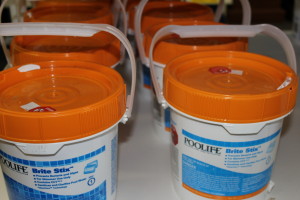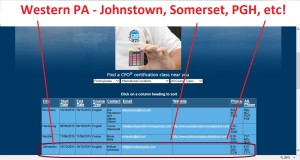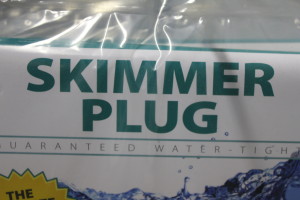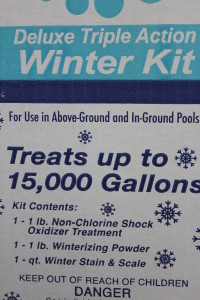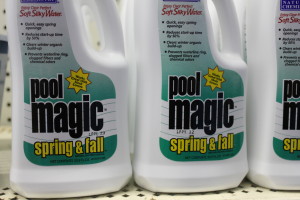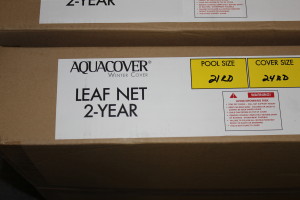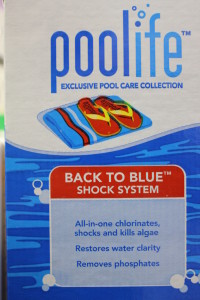“My water is crystal clear!” We hear it often. We know that cloudy water is not safe, but is clear water safe? The answer, simply, is no.
Clear water isn’t safe – not unless it is balanced and sanitized.
Why? Well, balanced water allows your sanitizer to be most effective while keeping you pool equipment, liner, and structure safe from aggressive or corrosive water. pH has a dramatic effect upon chlorine’s effectiveness. Low pH makes pH much more effective. And, high pH DRAMATICALLY reduces the effectiveness of chlorine. See here.
So, why not keep your pH low? Because low pH make water extremely aggressive and corrosive. The water attacks – well – pretty much anything, but especially metallic components. Stuff like heat exchangers in most heaters are made of copper – easily and quickly attacked by low pH water. Metal ladders? Yep. We’ve even seen pool top tracks made of coated steel corroded and destroyed by just one season of exposure to low pH water. Read more in this post about heater parts failing.
However, balanced, clear water is no safer to swim in than someone else’s bath water. You need an effective level of sanitizer in the water to kill organisms. Just because no algae is showing yet doesn’t mean you’ve got sanitary water. You use stabilizer? Too much can dramatically reduce chlorine’s effectiveness.
The only way you know if your water is balanced and sanitized is to test your water.
- Test strips – OK
- Test kit using reagents – Better
- Photometric colorimeter – Most accurate
The advantage to the photometric colorimeter testing, like we do in our lab, is it eliminates errors based on eyesight, ambient lighting, background colors, varying drop size, etc. Then, we are able to give prescriptive dosing based upon established standards for water quality. In other words – we eliminate the guesswork! Helpful info here.
